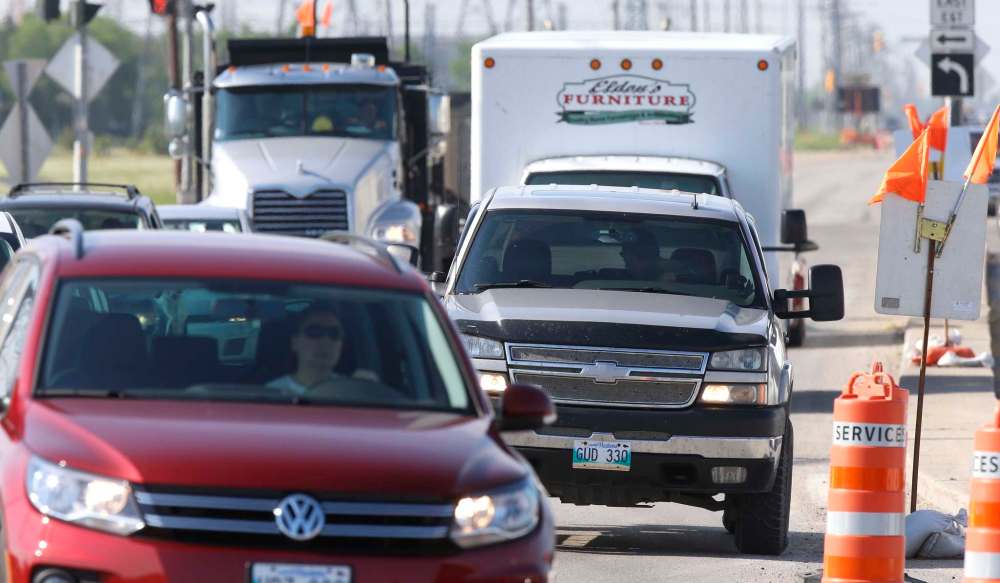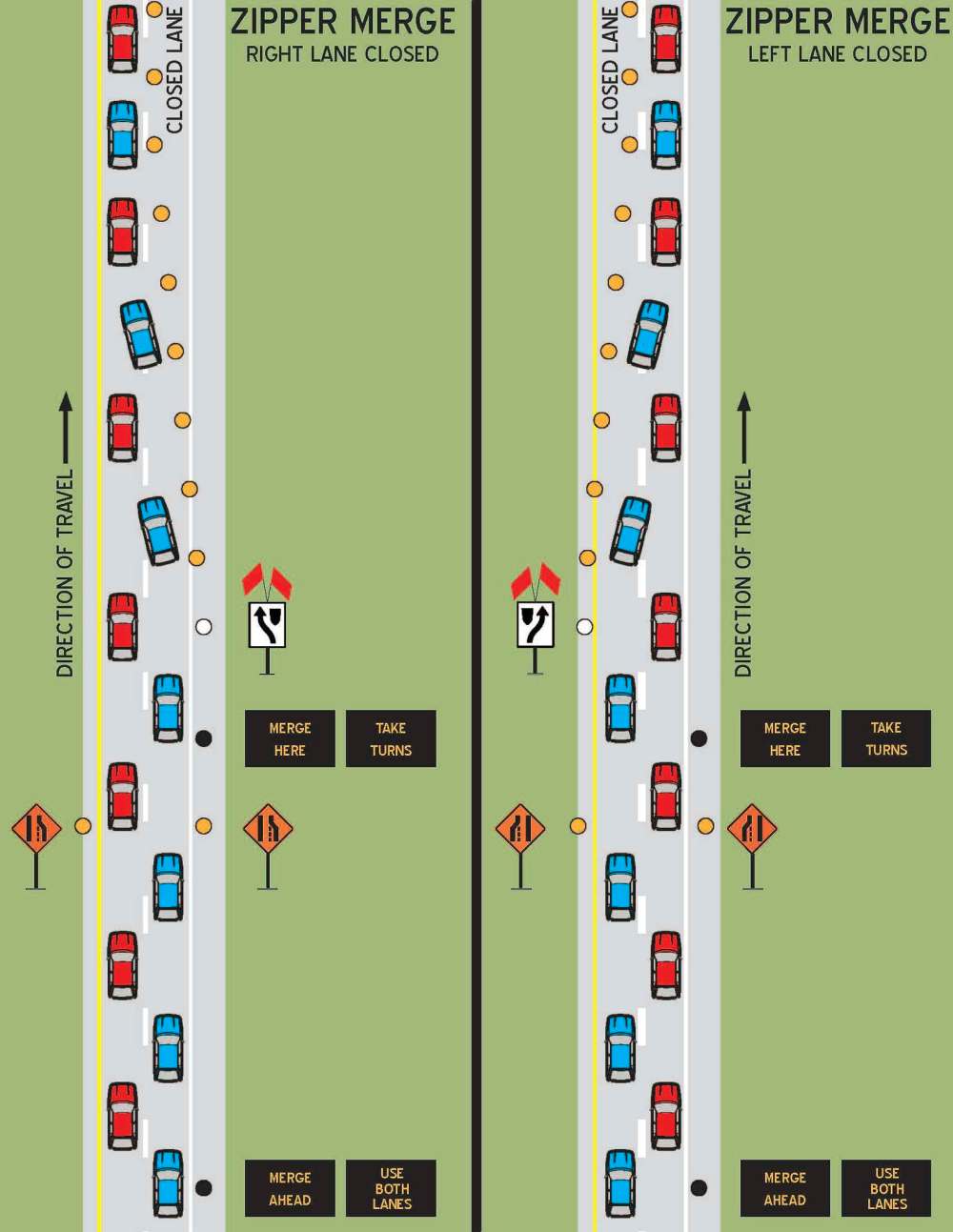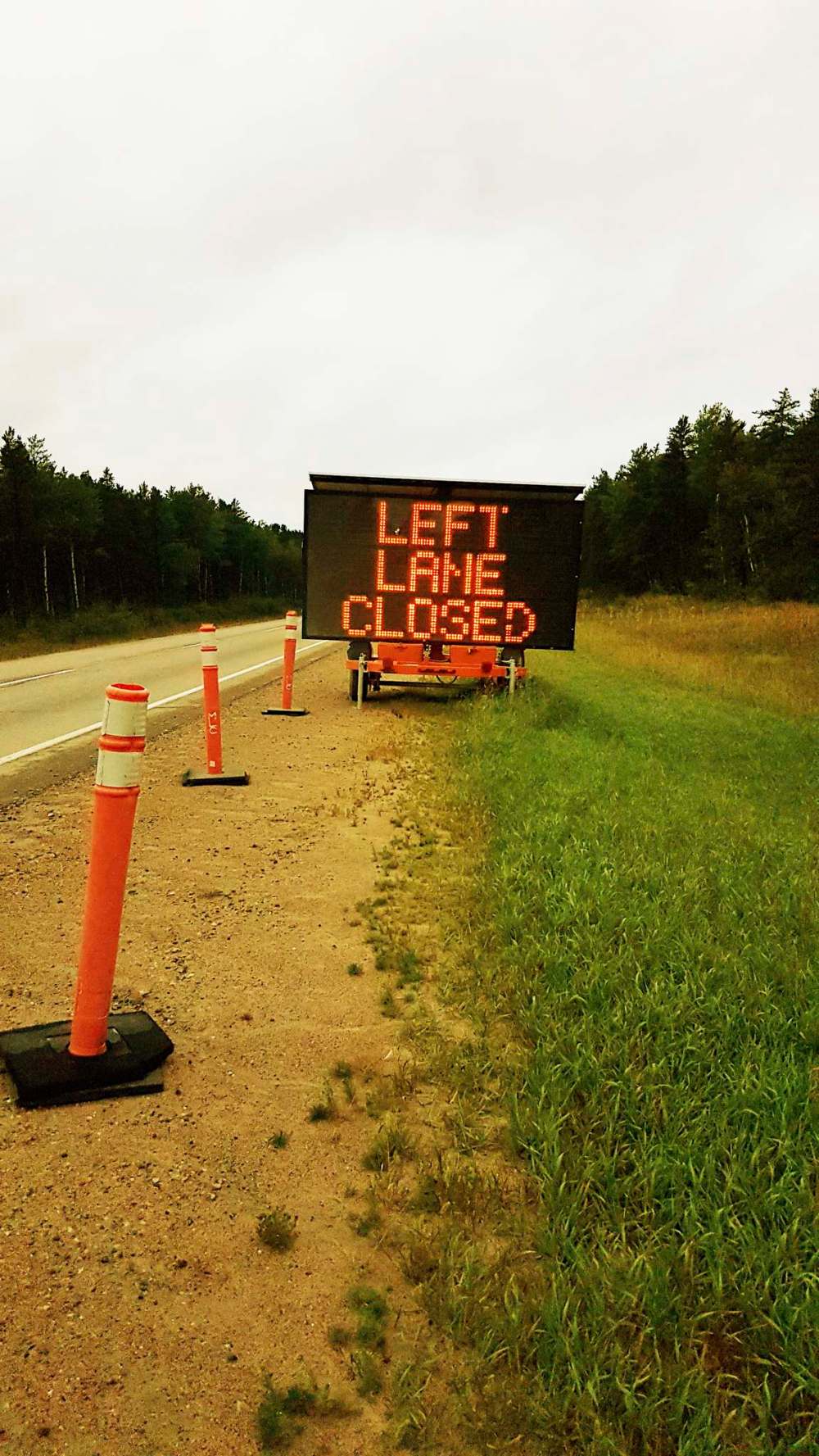You have one of three choices at lane closures
When in doubt, reach for the zipper merge
Advertisement
Read this article for free:
or
Already have an account? Log in here »
To continue reading, please subscribe:
Monthly Digital Subscription
$0 for the first 4 weeks*
- Enjoy unlimited reading on winnipegfreepress.com
- Read the E-Edition, our digital replica newspaper
- Access News Break, our award-winning app
- Play interactive puzzles
*No charge for 4 weeks then price increases to the regular rate of $19.00 plus GST every four weeks. Offer available to new and qualified returning subscribers only. Cancel any time.
Monthly Digital Subscription
$4.75/week*
- Enjoy unlimited reading on winnipegfreepress.com
- Read the E-Edition, our digital replica newspaper
- Access News Break, our award-winning app
- Play interactive puzzles
*Billed as $19 plus GST every four weeks. Cancel any time.
To continue reading, please subscribe:
Add Free Press access to your Brandon Sun subscription for only an additional
$1 for the first 4 weeks*
*Your next subscription payment will increase by $1.00 and you will be charged $16.99 plus GST for four weeks. After four weeks, your payment will increase to $23.99 plus GST every four weeks.
Read unlimited articles for free today:
or
Already have an account? Log in here »
Hey there, time traveller!
This article was published 30/08/2019 (2276 days ago), so information in it may no longer be current.
OK drivers, back to school. And it’s quiz time already:
You’re on a busy two-lane divided highway and come across a sign indicating the left lane ends in one kilometre. What is your next move?
A) Slide over to the right lane and line up. After all, everybody should do this and wait their turn to get through.

B) Stay in the fast-moving left lane, passing all the chumps who decided to line up.
C) Slide over to the right lane and attempt to block the left lane so the jerks who chose (b) can’t get past you.
If you chose (a), congratulations: you’re the consummate polite Canadian. You’re also incorrect. The problem is we rightly believe we should be waiting our turn and expect everybody else to do the same. But as we’ll see, there are problems with this approach because option (b) is always available.
People choose (b) for various reasons, the most obvious of which is they don’t want to wait in line all that time. But they, knowingly or not, are a step closer to what everybody should be doing, which is to use both lanes until the end. More later.
Option (c) is for the more aggressive Canadian drivers: wait your turn and take measures to force others to do the same. This is even more wrong than option (a). It’s not your job to regulate traffic, and you’re creating a dangerous situation that could escalate if the wrong personalities clash.
The problem with all these scenarios is there is a fundamental difference of opinion amongst motorists as to what the protocol should be. But motorists should not be the ones deciding. That’s where — and I cannot stress this enough — proper signage is essential if we are to end the anarchy and improve this situation.
I’ll give partial credit to those who picked option (b), but the next problem occurs when those in the left lane see the lane ahead ending and want to move over to the right to get through the bottleneck. Once again, everybody has a different idea about when this should be done.
Driver 1 might choose to do this 50 metres before the lane closure, while Driver 2 does it 100 metres away, and Driver 3 waits until the very end to force their way in. And because the right lane is full of polite Canadians waiting their turn, all three of these drivers will get in.
I encountered this situation several times over the summer on the westbound Trans-Canada near Prawda, driving home from the lake each Sunday. So, I decided to experiment by choosing each of the three options on three different occasions. My first choice was to take the open lane and merge later in the game. But it didn’t take long for my conscience to tell me it was wrong to pass around 100 waiting motorists in the right lane, some of whom made it clear how they felt about us left-lane bandits.
The next time, I took the polite route and parked myself in the right lane to wait my turn with most of the others. But it became abundantly clear that for each car on the right lane that made it through, four or five from the left lane managed to work their way in. That’s because those people started changing lanes too early and at different locations along the way. And yes, they all got in. Frustrating, for sure.

On the third attempt, the lane-blocking move I’d seen so many people use before me was tried. After all, the folks on the left know their lane is ending, and they are quite aware they are jumping the queue by cruising past everyone in line. But this has the potential to end badly, and I don’t recommend it. It fans the flames in what can already be a tense situation.
This seems like a no-win situation, so what are we to do?
Truth is, the only way to make sure the lane closure is negotiated fairly and with minimal frustration is to implement the zipper merge. But let’s not call it that. Because depending on who you talk to, they either know what it is or they don’t. A highway sign that reads “zipper merge” is not going to help.
I’d even go one step further and identify that a lane closure is coming without saying which lane it is. Save identification of the lane until later, which encourages traffic to continue using both lanes.
The most important signage will be that which instructs motorists as follows:
LANE CLOSURE AHEAD
CONTINUE USING BOTH LANES
IN HEAVY TRAFFIC, TAKE TURNS AT CLOSURE
And, repeat the signs again closer to the closure.
When it’s not busy and traffic isn’t backed up, there is no harm in merging to the open lane earlier.

A little bit of enforcement at these locations would not be a bad thing, either.
The City of Winnipeg conducted a zipper merge trial in 2015, but the effort was marginal and the signage was not as helpful as it should have been. Results were underwhelming and we haven’t seen it since.
We can’t expect an immediate change in driving habits or 100 per cent participation, because these things never happen. But through effective driver education, proper signage and a reasonable level of enforcement, we have a real chance of improving what is often a frustrating and stressful situation.
autoreviews@mymts.net
Instagram: @autoreviews


